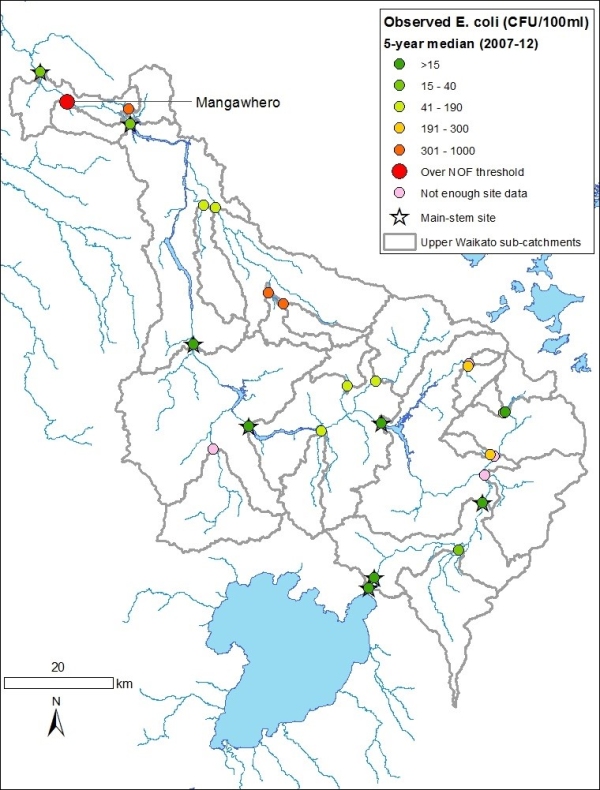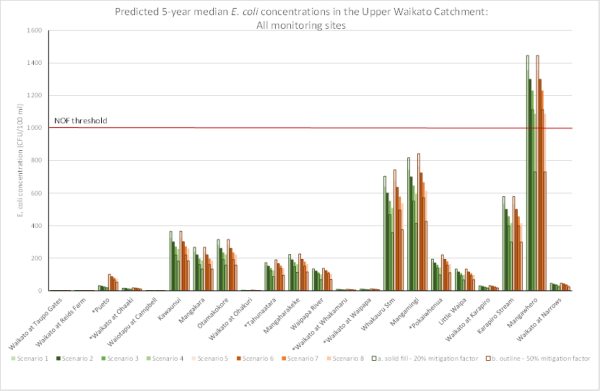The Catchment Land Use for Environmental Sustainability model system (CLUES) was used to simulate E. coli loads in the upper Waikato River catchment. The work was carried out as part of an investigation into the economic effects of implementing the National Policy Statement for Freshwater Management.
The aim was to investigate the effects of plantation forest conversion to dairying and stock exclusion on E. coli concentrations.
Percentage differences in E. coli loads between the no-change scenario and a series of land-use and mitigation scenarios were used to scale observed annual median E. coli concentrations from 23 water quality monitoring stations up or down. The observed and scaled E. coli median concentrations were compared to the National Objectives Framework bottom-line E. coli concentration for secondary contact (1000 CFU/100ml).
It was found that only one site, Mangawhero, currently has E. coli median concentrations greater than the bottom line and that land-use change does not result in more sites with simulated concentrations above the bottom line. Meeting the bottom line at Mangawhero would likely require additional mitigation measures, particularly where there are high percentages of dairying and peat soils.
Forest conversion results in increases in adjusted E. coli concentrations of 0–19 per cent, depending on the extent of upstream conversion. The exception is Pueto, which would see a high proportional area change of forest to dairy farming under the land-use change scenario. Stock exclusion to Dairy Accord levels would likely not be enough to maintain current E. coli concentrations following land-use change.
NIWA Contacts:
Annette Semadeni-Davies and Sandy Elliott


